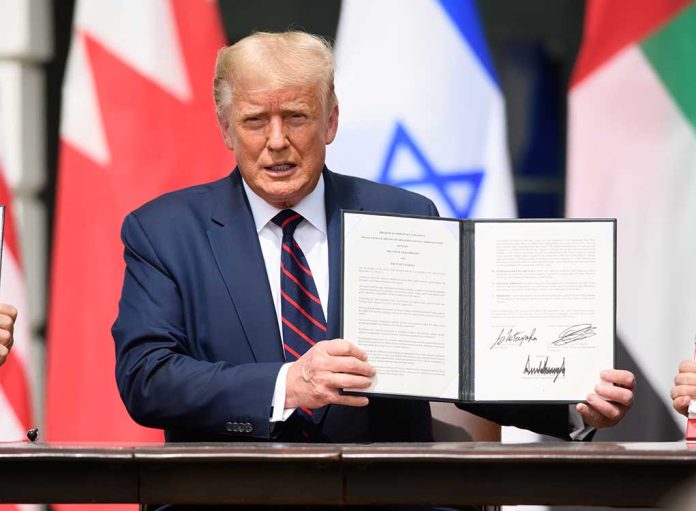
Donald Trump’s recent executive orders significantly alter U.S. energy policy and economic direction.
Key Takeaways
- President Trump signed executive orders revoking Biden-era policies on Inauguration Day, 2025.
- The orders declare an “energy emergency” to combat past poor energy policies.
- Trump’s measures aim to streamline regulatory processes and enhance infrastructure projects.
- The executive orders include withdrawing from the Paris Climate Agreement.
- Trump criticizes renewable energy subsidies, arguing they harm reliable power sources.
Revoking Previous Policies
On Inauguration Day, 2025, President Donald Trump signed a series of executive orders dismantling many energy policies from the previous administration. These orders mark a decisive shift in America’s energy strategy, emphasizing a move toward energy autonomy and economic growth over environmental considerations. A significant aspect involves withdrawing from the Paris Agreement and ending subsidies for wind energy projects. Trump’s action aims to combat what he describes as ‘climate extremism’ while promoting energy self-reliance.
One of the key points was the declaration of an “energy emergency.” This move addresses the inefficiencies and challenges crippling the American power grid, with looming shortfalls in energy. The North American Electric Reliability Corp. highlights potential losses in power generation due to current power-plant shutdowns. The executive orders intend to counteract these stresses by facilitating infrastructure growth and improving energy production.
— Rep. Wesley Hunt Press Office (@RepWPH) January 8, 2025
Infrastructure and Regulatory Reforms
The executive orders also ease regulations on constructing natural-gas pipelines and nuclear power plants, effectively boosting the nation’s energy capability. Trump’s approach targets lengthy permitting processes and environmental hurdles, which have historically delayed necessary infrastructure projects. By confronting regulatory hurdles, the orders aim to catalyze the development necessary to meet America’s growing energy demands. Notably, the orders call out California’s wildfire issues as indicative of the broader need for streamlined forest management practices.
Efforts to reduce regulatory burdens extend beyond energy policy. Trump’s executive orders annul the Biden administration’s mandates on electric vehicles and attempts to ban gas appliances. These measures are part of a broader strategy to support reliable energy sources and stimulate economic growth unfettered by exhaustive regulations.
Implications of the Orders
Critics argue these executive orders hinder progress towards sustainable energy goals, but supporters contend they pave the way for robust economic growth by enabling domestic energy production. Trump’s revocation of the Paris Agreement is particularly symbolic, underscoring his belief that U.S. priorities should not be dictated by international conventions that fail to deliver on decarbonization promises.
Ultimately, these executive orders embody a strategic reorientation towards energy-rich prosperity for the United States, differentiating itself from European green energy policies that potentially risk economic stability. By prioritizing energy autonomy and deregulation, the Trump administration’s directives seek to enhance America’s standing within the global energy landscape.





